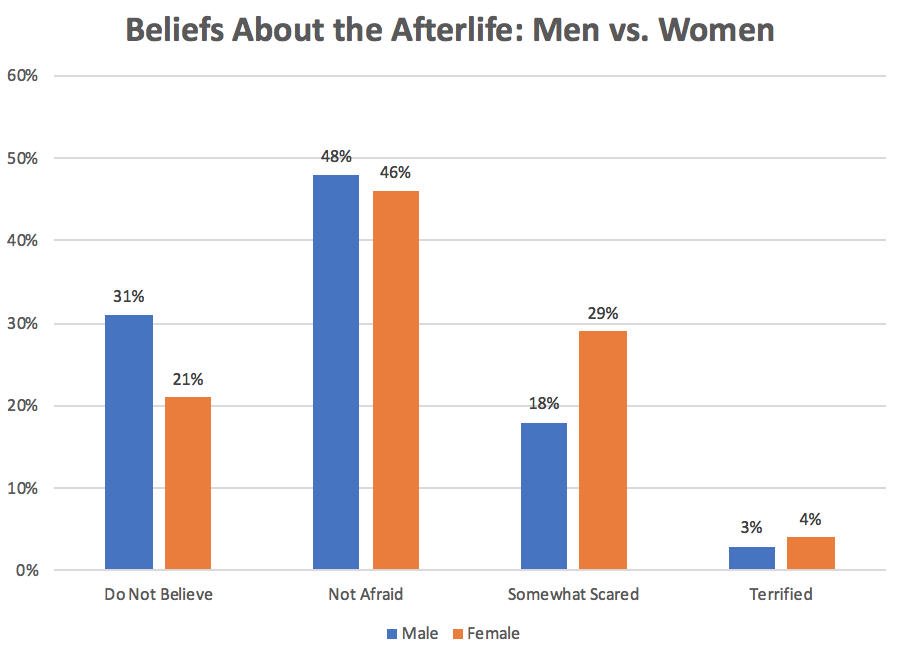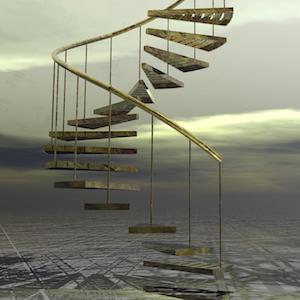MedCure is a company whose mission is to get as many people to donate their bodies to science as possible. There's certainly no shortage of potential customers. The trouble is getting people to make the leap and sign up.
Presumably as part of the company's marketing efforts, it decided to conduct a survey to better understand how people feel about death, the afterlife, and donating one's body to science. Some of their results are utterly fascinating.
The company sent out 17,500 e-mails to employees of Havas, a public relations firm. Of the roughly 1,600 people who responded, about 600 were men and 1,000 were women. Most of the respondents (79%) were under the age of 38, but a sizable fraction (17%) were aged 38 to 53, and a few (4%) were over the age of 54. Additionally, about 600 lived in the U.S., and the other 1,000 lived abroad.
By far, the most interesting finding involved the gender gap in regard to beliefs about the afterlife. (See chart.)

As shown, men were the least likely to believe in the afterlife, and the ones who did were not too concerned about it. Women, on the other hand, were likelier to believe in an afterlife and to be somewhat scared of it.
This gender difference in afterlife beliefs apparently had little effect on whether a person would consider donating his or her body to science. About 42% of women viewed the practice positively, 15% negatively, and 44% had no opinion. The percentages were similar to those of men.
Perhaps unsurprisingly, more people living in Europe -- a continent in which religion is on the decline -- did not believe in an afterlife (29%) compared to those living in the U.S. (22%) or Latin America (21%). Older people were least likely to be afraid of the afterlife, but the results in regard to age were not statistically significant.
Obviously, there are limitations to the survey. Because most of the respondents were below age 38, it should be seen as reflecting the views of young people, not the nation (or world) as a whole. Still, it serves as a useful insight into societal thinking and, in this case, a tool to identify barriers to the practice of body or organ donation.




